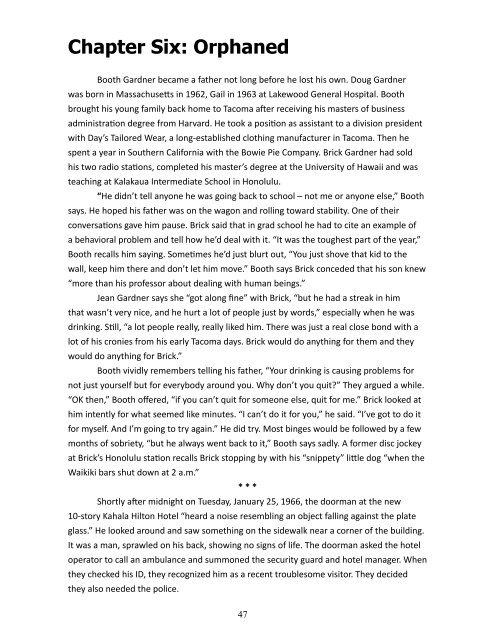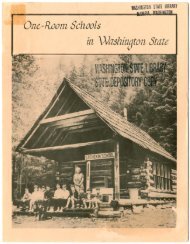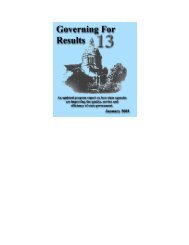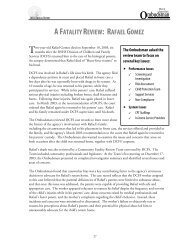BOOTH WHO? - Washington State Digital Archives
BOOTH WHO? - Washington State Digital Archives
BOOTH WHO? - Washington State Digital Archives
Create successful ePaper yourself
Turn your PDF publications into a flip-book with our unique Google optimized e-Paper software.
Chapter Six: Orphaned<br />
Booth Gardner became a father not long before he lost his own. Doug Gardner<br />
was born in Massachusetts in 1962, Gail in 1963 at Lakewood General Hospital. Booth<br />
brought his young family back home to Tacoma after receiving his masters of business<br />
administration degree from Harvard. He took a position as assistant to a division president<br />
with Day’s Tailored Wear, a long-established clothing manufacturer in Tacoma. Then he<br />
spent a year in Southern California with the Bowie Pie Company. Brick Gardner had sold<br />
his two radio stations, completed his master’s degree at the University of Hawaii and was<br />
teaching at Kalakaua Intermediate School in Honolulu.<br />
“He didn’t tell anyone he was going back to school – not me or anyone else,” Booth<br />
says. He hoped his father was on the wagon and rolling toward stability. One of their<br />
conversations gave him pause. Brick said that in grad school he had to cite an example of<br />
a behavioral problem and tell how he’d deal with it. “It was the toughest part of the year,”<br />
Booth recalls him saying. Sometimes he’d just blurt out, “You just shove that kid to the<br />
wall, keep him there and don’t let him move.” Booth says Brick conceded that his son knew<br />
“more than his professor about dealing with human beings.”<br />
Jean Gardner says she “got along fine” with Brick, “but he had a streak in him<br />
that wasn’t very nice, and he hurt a lot of people just by words,” especially when he was<br />
drinking. Still, “a lot people really, really liked him. There was just a real close bond with a<br />
lot of his cronies from his early Tacoma days. Brick would do anything for them and they<br />
would do anything for Brick.”<br />
Booth vividly remembers telling his father, “Your drinking is causing problems for<br />
not just yourself but for everybody around you. Why don’t you quit?” They argued a while.<br />
“OK then,” Booth offered, “if you can’t quit for someone else, quit for me.” Brick looked at<br />
him intently for what seemed like minutes. “I can’t do it for you,” he said. “I’ve got to do it<br />
for myself. And I’m going to try again.” He did try. Most binges would be followed by a few<br />
months of sobriety, “but he always went back to it,” Booth says sadly. A former disc jockey<br />
at Brick’s Honolulu station recalls Brick stopping by with his “snippety” little dog “when the<br />
Waikiki bars shut down at 2 a.m.”<br />
* * *<br />
Shortly after midnight on Tuesday, January 25, 1966, the doorman at the new<br />
10-story Kahala Hilton Hotel “heard a noise resembling an object falling against the plate<br />
glass.” He looked around and saw something on the sidewalk near a corner of the building.<br />
It was a man, sprawled on his back, showing no signs of life. The doorman asked the hotel<br />
operator to call an ambulance and summoned the security guard and hotel manager. When<br />
they checked his ID, they recognized him as a recent troublesome visitor. They decided<br />
they also needed the police.<br />
47
















